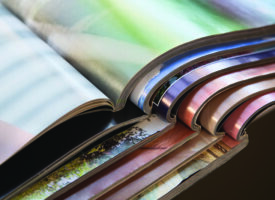Journalists are taught how to write news, which means writing no-nonsense copy that gets to the important information as quickly as possible.
In a hard-hitting news story, there is no room for opinion, advice, humor or commentary. Most importantly, you should dispense with flowery writing and twinkling prose. It is not a literary masterpiece that is going to impress your readers. It is the information you give them.
A news story is a stripped-down article that tells your readers what happened or who said what. Great news writing is as much an art as stringing together priceless prose for an elegant novel or thought-provoking poem.
And the best news writing involves the simplest words and the most basic of sentence constructions. You would be surprised at how much difficulty some rookie writers get into in trying to perfect this straightforward formula.
Journalists write to a set pattern most of the time. It is a tried and tested format that is pretty much unchanged for many years and successfully outlines key information in the correct order.
While journalists in different organizations around the world may tweak the formula here and there, news writing, by and large, involves for elements.
1. Angle
A news story without an angle is like pizza without cheese. Try biting into a pizza minus the cheese and all you get is …a sandwich. When you learn how to write like a journalist the first thing you should be taught is how to identify angles, which in effect is your topic and is the reason you are writing an article in the first place.
2. Introduction
Often called intro or lead, this is your first one or two paragraphs of your news story. While an angle defines what you are going to write, your intro is actually going ahead and putting it into words. Intros employ the who, what, when, where, why and how concept in order to get your story out quickly.
3. Quote
Almost all news stories have some sort of quote. A quote humanizes the story and also provides it with authority. The best kinds of quotes support what you write in your intro. Quotes should have the full name and title of the person being quoted. Less ideal is “reliable source” or “spokesperson” but sometimes it is unavoidable. News articles can be written without a quote but this is not ideal.
4. Attribution
Following on from quotes, you should do your best to make sure events are attributed to somebody, especially if you were not at the scene. In court reporting, this is of utmost importance, which is why in these types of stories you may see phrases such as “the court was told”, “he told the court” and “the court heard”.
News writing is not like informational articles. In a news story, you solve the problem as soon as possible. “How to” articles may identify problems and then offer a solution. In news writing, however, you do not have time for this.



